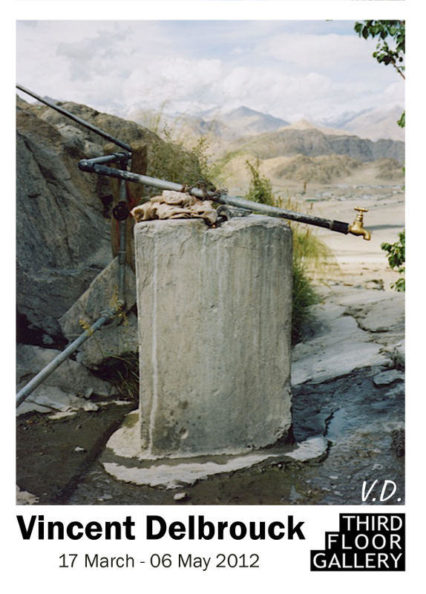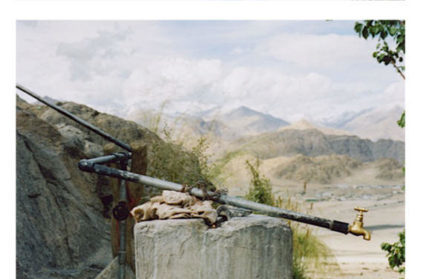Sara Rees visited the Third Floor Gallery in Cardiff to delve into the latest exhibition from the self-taught and naïve artist, Vincent Delbrouck, including the project ‘Beyond History.’
Since opening two years ago Third Floor Gallery, an independent gallery set up and run by photographers, has quickly established a reputation for itself by virtue of a diverse and engaging program of international documentary photography by established and emerging photographers alike, many of whom are challenging the boundaries of the genre. This can certainly be said of Vincent Delbrouck, whose current exhibition V.D. includes three works or series – ‘As Dust Alights’, ‘Some Windy Trees’ and ‘Beyond History’.
 The use of his own initials as the exhibition’s title gives us our first hint of Vincent Delbrouck’s unique approach to documentary photography, exemplified in ‘Beyond History’, a project spanning 1998-
The use of his own initials as the exhibition’s title gives us our first hint of Vincent Delbrouck’s unique approach to documentary photography, exemplified in ‘Beyond History’, a project spanning 1998-
‘Beyond History’, consists of two walls of scrapbook-
We glimpse in the backgrounds of dark, shabby interiors flaking paint, faded linoleum floors, ancient TV sets, kitsch plastic flowers. And beyond in the glaring sun deserted streets crumble into decay. To some extent we are familiar with such images which exert a seductive power over a Western eye, imbuing (somebody else’s) poverty with a romantic or heroic quality. Delbrouck shows us these images of squalid beauty but places them amongst portraits of Cuban people who do not submit to our gaze, who defiantly meet our eyes, and any aesthetic pleasure is swiftly hijacked by a more empathic response, and a pervading feeling of melancholy. Vincent Delbrouck says of the work, ‘I wanted to discover something from inside, a dark side also’.
‘Beyond History’ invites us to contemplate a place after ‘The End of History’. After the death of ideology, the sovereignty of global market forces. There is no grand narrative, no history, there is only the fragmentary, transitory, the intimacy, dirt and chaos of real life. Perhaps the defining image of the exhibition could be that of a bare-
You might also like…
In this week’s episode we speak to Huw Stephens—BBC Radio Wales presenter—and director Ian Jones about the upcoming BBC series The Story of Welsh Art. The series explores the rich history of visual arts in Wales, beginning in the Neolithic period and examining key periods and forms which have shaped Wales’s artistic legacy.












